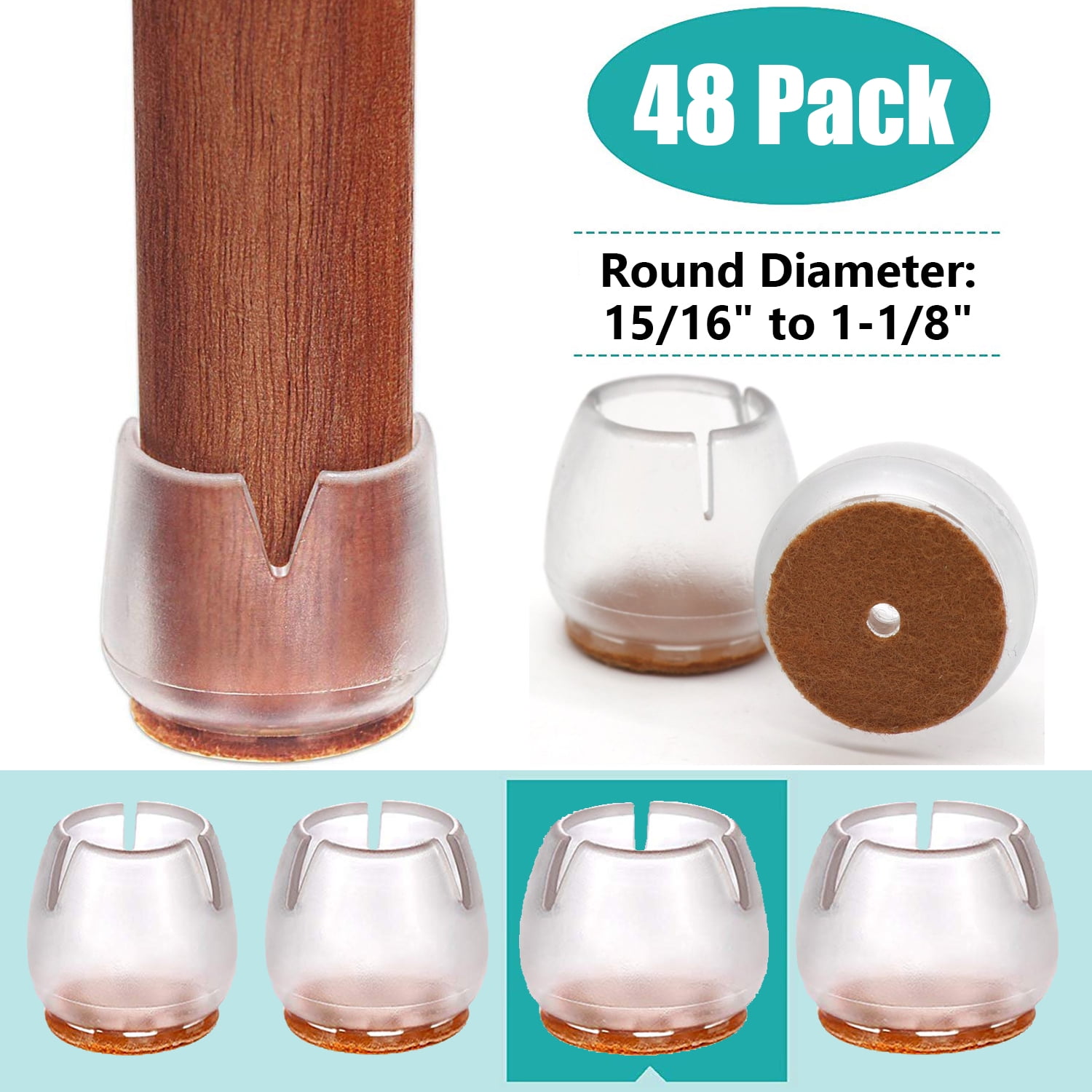Types of Protective Covers for Chair Legs

Chair leg protectors are essential for safeguarding your floors from scratches, dents, and other forms of damage caused by furniture movement. They come in various types, each offering unique advantages and disadvantages in terms of material, durability, aesthetics, and cost.
Types of Chair Leg Covers
The most common types of chair leg covers are made from felt, rubber, plastic, and metal. Each material possesses distinct characteristics that make them suitable for specific applications.
- Felt: Felt chair leg covers are a popular choice due to their soft, non-abrasive nature. They are typically made from wool or synthetic fibers and are available in a variety of colors. Felt covers are excellent for protecting hardwood floors and delicate surfaces, as they prevent scratches and scuffs. However, felt can be susceptible to wear and tear, especially in high-traffic areas. They are also less effective on uneven surfaces and may not be suitable for heavier furniture.
- Rubber: Rubber chair leg covers are known for their durability and resilience. They are typically made from natural or synthetic rubber and offer excellent traction, preventing furniture from sliding on smooth floors. Rubber covers are also resistant to moisture and can withstand heavy use. However, they can be more expensive than felt covers and may leave black marks on light-colored floors.
- Plastic: Plastic chair leg covers are a cost-effective and versatile option. They are available in various shapes and sizes, making them suitable for a wide range of chair legs. Plastic covers are lightweight, easy to clean, and can be found in a range of colors and finishes. However, they may not be as durable as rubber or metal covers and can be prone to scratches and dents. They may also not provide as much protection against heavy furniture.
- Metal: Metal chair leg covers are the most durable option and are typically made from aluminum or stainless steel. They are resistant to wear and tear and can withstand heavy use. Metal covers are also aesthetically pleasing and can add a touch of elegance to your furniture. However, they can be more expensive than other options and may not be suitable for all types of furniture.
Material Comparison, Protective covers for chair legs
The following table summarizes the key features of different materials used for chair leg covers:
| Material | Durability | Aesthetic Appeal | Price | Advantages | Disadvantages |
|---|---|---|---|---|---|
| Felt | Moderate | Good | Low | Soft, non-abrasive, protects delicate surfaces | Susceptible to wear and tear, not suitable for uneven surfaces |
| Rubber | High | Good | Medium | Durable, resilient, provides good traction | Can leave black marks on light-colored floors |
| Plastic | Moderate | Good | Low | Versatile, lightweight, easy to clean | Not as durable as rubber or metal, prone to scratches and dents |
| Metal | High | Excellent | High | Durable, resistant to wear and tear, aesthetically pleasing | Expensive, may not be suitable for all types of furniture |
Choosing the Right Protective Covers for Chair Legs

Selecting the perfect chair leg covers involves considering several factors to ensure both functionality and aesthetic appeal. This guide provides a step-by-step approach to choosing the right covers for your chairs and floors.
Chair Leg Shape and Size
The shape and size of your chair legs are crucial factors in selecting the appropriate covers. Chair legs come in various shapes, including round, square, oval, and rectangular. To ensure a perfect fit, you need to accurately measure the circumference or width of your chair legs.
- For round chair legs, measure the circumference by wrapping a measuring tape around the widest part of the leg.
- For square or rectangular chair legs, measure the width or length of the leg at its widest point.
- For oval or other irregularly shaped legs, measure the longest and shortest dimensions.
Floor Type
Different flooring materials require specific types of protective covers to prevent scratches, dents, and other damage. Here’s a guide for selecting the best covers for various flooring types:
| Floor Type | Recommended Chair Leg Covers | Explanation |
|---|---|---|
| Hardwood | Felt pads, silicone pads, or rubber tips | These materials provide excellent cushioning and grip, minimizing scratches and dents. |
| Tile | Felt pads, silicone pads, or rubber tips | These materials help prevent scratches and sliding, ensuring stability on smooth tile surfaces. |
| Carpet | Felt pads, plastic caps, or furniture sliders | Felt pads provide cushioning and grip, while plastic caps and furniture sliders facilitate easy movement on carpets. |
| Laminate | Felt pads, silicone pads, or rubber tips | These materials offer a balance of cushioning and grip, protecting laminate floors from scratches and dents. |
Protective covers for chair legs are essential for safeguarding your floors from scratches and scuffs. These covers come in various materials and designs, offering both functionality and style. To enhance the overall aesthetic of your seating, you might also consider exploring the world of chair covers and more , where you’ll find a wide range of options to complement your furniture and personal taste.
Whether you’re seeking to protect your floors or elevate your décor, chair leg covers provide a practical and stylish solution.
Protective covers for chair legs are essential for safeguarding your floors from scratches and scuffs. But beyond aesthetics, consider the practical benefits of waterproof chair covers for elderly who might experience occasional accidents. These covers not only protect the chair fabric but also provide an extra layer of hygiene and comfort.
In addition to chair leg covers, consider a comprehensive approach to protecting your furniture with a range of protective solutions tailored to your specific needs.